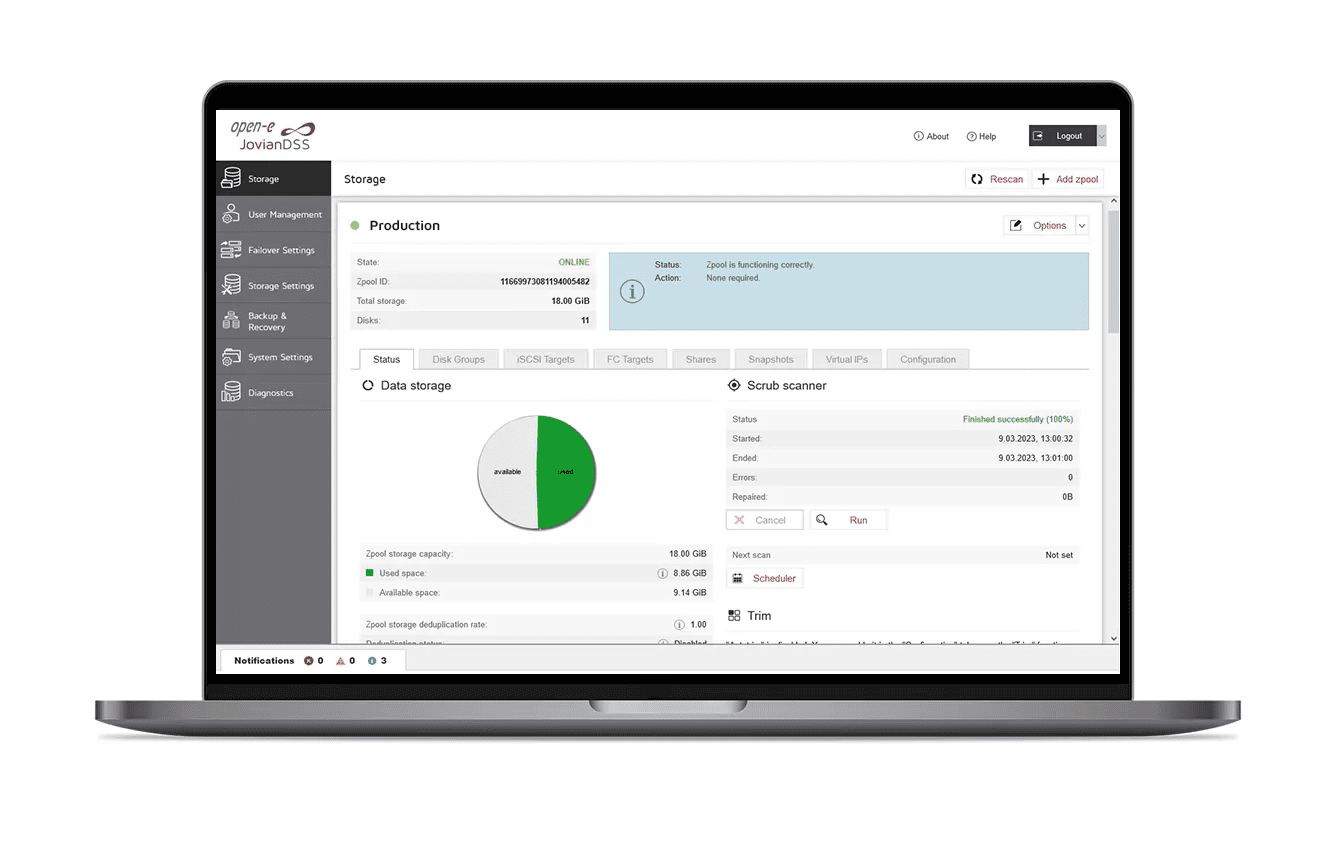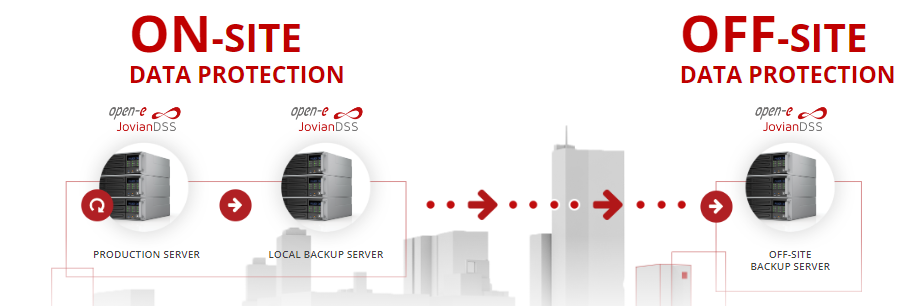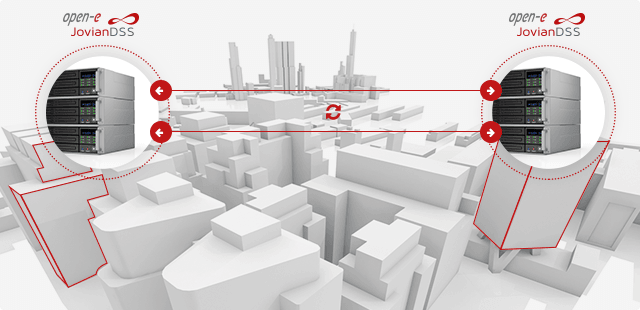The modern world relies heavily on oil and gas. Before we develop natural alternatives to cover most of the energy demand, these are the primary sources and essential inputs for various products such as transportation fuels, petrochemicals, and other fields, from power generation to plastics, solvents, adhesives manufacturing, and many more. The production and distribution of oil and gas involve complex processes and need systems that use advanced technologies from different domains. As this industry becomes modernized and more automated, there is a growing need for systems that allows keeping and accessing data effectively.
Data storage is becoming more critical for this sector as it enables extensive data analysis, which can provide valuable insights and solutions. In the past, geologists and chemical engineers were the key players in the industry, but now data scientists are also highly desirable and needed.
Therefore, let’s explore how data storage transforms this industrial sector and how much data management is required today.
A Complex and Dynamic Market with Multiple Challenges
Despite the drop in oil & gas prices and demand for these products during the pandemic, in the last two years, we have seen a renewed surge in market pressure for these products and a marked increase in revenues in the industry worldwide. It seems evident that such a big industry with such a massive impact on almost every aspect of our life and work (energy, fuel, products like plastic, and even fertilizers produced from natural gas, etc.) faces multiple challenges. The main ones are:
- costs of production and distribution
- lack of educated and well-trained personnel
- reducing the carbon emission due to regulations and policies
- safety and security of assets (cybersecurity)
- alternative energy products competition
- gas price, political and environmental volatility
- business continuity with no shutdowns and downtimes
We can go deeper and look at all three inner sub-sectors of the gas and oil industry from a more detailed perspective:
- Upstream (E&P) involves resource finding and extraction. It uses bigger and pricier pumps and has high capital, time, and technology risks.
- Midstream transports and stores raw materials for refineries. It faces complex regulations (regarding pipelines) and depends on upstream success.
- Refineries and gas stations are downstream. They make and supply public products from oil and gas. Global market conditions change downstream by impacting oil prices, costs, margins, and demand.
As mentioned before – the market’s stability is volatile, as the pandemic period proved in 2019/20. Stability in this sector was also disrupted by the situation in the east when Russia began its invasion of Ukrainian territories on February 24 last year. No other industry is quite like gas and oil, which depends significantly on the worldwide state of affairs in politics, health, and society. Experts agree that improving and protecting this business from these uncertainties is essential. This can be done with the optimization introduced at every step. Analyzing the market as a whole is possible but complex. Yet, it can be easier if relevant data gathered to be analyzed are kept and processed safely. And this is an excellent moment for data storage to shine.
The Growing Demand for Digitalization and Its Consequences

Recently, analytics seems to be the most crucial aspect of data storage in this market. There’s a growing need to increase efficiency at all stages. Analytics based on data optimizes the industry, simplifies it, and reduces the cost of extraction and production with seismic data analysis. It also allows for remote and quick operations with real-time simulations. Efficient data storage makes it a much cheaper and less time-consuming process while improving decision-making. Multiple complicated operations can be done remotely and prepared by real-time simulations, saving money and time. Unfortunately, some of them cost plenty and take a lot of time to be processed by humans.
AI and robots increasingly take over people’s duties in planning or handling machines. Some earlier tasks realized by educated and trained personnel can now be automated. It makes a lot of processes more precise and profitable. Speaking of personnel – the educational approach based on reliable and accurate digitized information increases the number of workers, from geologists, and chemical engineers to machine operators and data scientists, simultaneously reducing human labor in extreme conditions.
The last most important aspect of how efficient data storage can improve the gas and oil industry is the environment and health. Analyzing vast amounts of data and using it in real time, thanks to a fast data storage system, allows companies to reduce the negative impact on the environment by analyzing greenhouse gas emissions, water usage, and workers’ safety. Except that it provides great waste and recycling management.
As you can see, there’s lots and lots of data to store and be accessible constantly and in no time, so the task the IT administrator faces when managing a data center is not easy. Space scalability and efficiency, data safety and availability, along with reducing the costs of maintenance, are also a big deal. Let’s look at how the Open-E flagship product – Open-E JovianDSS – deals with them, providing the best solutions on the market for a reasonable price and great support.
Data Protection in the Digital Age
Open-E JovianDSS answers a huge industry challenge – data safety and availability. Many aspects of the market make specialists highlight how vital cybersecurity is. An IT administrator should always be prepared to deal with the consequences of ransomware attacks. More and more frequently, oil refineries’ IT infrastructure becomes a target of cyberterrorism or cyber criminality. The first is caused by political tensions stemming from natural resources, foreign policy, authoritarian leadership, etc. The second one may be caused by activism to undermine a country’s or company’s economic value or just to provide financial gain to the attackers.
Although digitization leads to many improvements, it also has some disadvantages. It’s not an exaggeration to say that more attack opportunities arise as the digital infrastructure expands. Such a complex IT and OT (Operational Technology) environment makes tracking the attack harder and contains many gaps hackers use. The fact that at many plants, the hardware and software are outdated makes it even worse.
As you can see, it’s crucial to focus on data protection to prevent the plants from shutting down, losing, and wasting resources (e.g., if relevant sensors responsible for notifying about issues are misled). The financial consequences of such an incident are apparent.
You’ll be surprised how well Open-E JovianDSS can assist in this field!

Creating read-only snapshots of the system state is its main feature. It captures the data locations and keeps the image of it in an immutable form, so you can go back to it when you need. It also uses Copy-on-Write (CoW), which allows for total control and modification without changing the snapshot. Open-E JovianDSS can quickly restore a previous state, no matter what changes (deletion or ransomware encryption) were done. Storing snapshots takes less capacity on the server than a regular data backup. However, remember that a snapshot itself is not a backup!
Backup Options to Prevent Downtime
Growing amounts of digitized data stored in the industry force us to invest in backup options and data redundancy. Open-E JovianDSS allows the design of the whole infrastructure to provide total Business Continuity through Open-E On- & Off-site Data Protection and High Availability.
Considering the nature of the extracted resources, gas, and oil facilities are exposed to multiple physical threats – mainly fire that may literally burn the servers and data storing hardware, leading to all data loss. An IT administrator is able to protect against that by using On- & Off-site Data Protection methods. It is a comprehensive strategy for Backup and Disaster Recovery by scheduling data replication outside the local sites using the retention plans based on snapshots. This way, servers with critical data can be easily and quickly restored in case of a disaster using on-site or off-site storage systems.

High Availability allows for avoiding downtimes by building the system with two nodes. One is responsible for the failover and takes all the duties if the other node is down. Thanks to that, the infrastructure remains fully functional, and data integrity, stability, and performance are maximized. This also improves the reliability and availability of your data storage system and reduces the risk of data loss or corruption.

Smart Provisioning of The Data Space
Gas-and-oil-related data that are being gathered all the time and related to multiple different aspects of the industry require an easy-scalable data storage system. Regarding that, the system implemented in any facility must scale up to the growing demands of data to be collected. Open-E JovianDSS offers thin- and over-provisioning:
- Thin-provisioning allows allocating logical space without reserving the physical space until needed.
- Over-provisioning allows allocating more space to a virtual disk than what is actually physically available.
The Worst is to Be Left Behind
As you can see, there is no way to avoid the digitalization of the gas and oil industry. So preparing the IT and OT infrastructure with an excellent data storage environment is necessary. Expanding the alternative energy source industry won’t change it; it will also need well-performing data storage. So it seems best for an IT administrator to know the best current solution on the market and use them not to be left behind by competition and industry demands.
Don’t hesitate and try the FREE, fully functional 60-day trial version of Open-E Jovian DSS!
- Experiment with snapshots and retention plans so as to build a bullet-proof Business Continuity plan.
- Try the shared and non-shared clustering options to see how the failover functionality works.
- Test the performance of various redundancy levels to check which one fits you best.
Go to the Open-E website to download the Trial:





